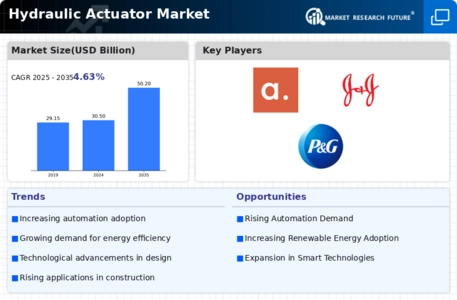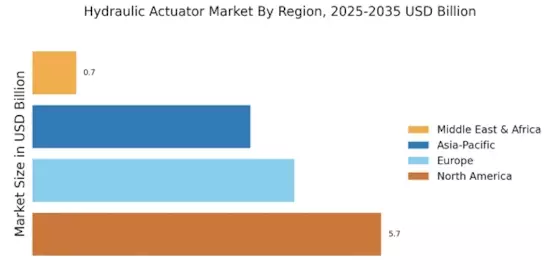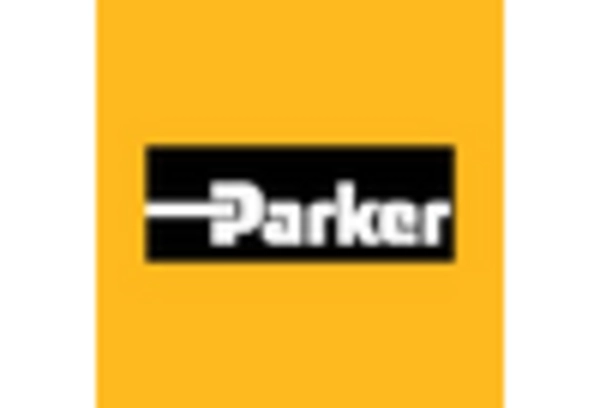Rising Demand in Automation
The Hydraulic Actuator Market is experiencing a notable surge in demand due to the increasing automation across various sectors. Industries such as manufacturing, construction, and automotive are increasingly adopting hydraulic actuators to enhance operational efficiency and precision. According to recent data, the automation sector is projected to grow at a compound annual growth rate of approximately 9% over the next five years. This trend indicates a robust market for hydraulic actuators, as they play a crucial role in automating processes that require high force and precise control. As companies strive to improve productivity and reduce labor costs, the hydraulic actuator market is likely to benefit significantly from this shift towards automation.
Growth in Construction Activities
The Hydraulic Actuator Market is poised for growth, driven by the expansion of construction activities worldwide. With urbanization and infrastructure development on the rise, the demand for hydraulic actuators in construction machinery is increasing. Hydraulic actuators are essential components in equipment such as excavators, cranes, and loaders, which are integral to construction projects. Recent statistics indicate that the construction sector is expected to grow at a rate of 5% annually, further fueling the need for hydraulic systems. This growth not only enhances the market for hydraulic actuators but also encourages innovation in actuator technology to meet the evolving demands of the construction industry.
Advancements in Hydraulic Technology
The Hydraulic Actuator Market is benefiting from continuous advancements in hydraulic technology. Innovations such as improved materials, enhanced design, and integration with digital controls are making hydraulic actuators more efficient and reliable. These advancements are crucial as industries seek to optimize performance and reduce maintenance costs. For instance, the introduction of smart hydraulic actuators that can be monitored and controlled remotely is transforming operational capabilities. This technological evolution is expected to drive market growth, as companies increasingly invest in modern hydraulic solutions to stay competitive. The hydraulic actuator market is likely to see a significant uptick in demand as these technologies become more prevalent.
Increased Focus on Energy Efficiency
The Hydraulic Actuator Market is witnessing a shift towards energy-efficient solutions, driven by rising energy costs and environmental concerns. Industries are increasingly adopting hydraulic actuators that offer improved energy efficiency, thereby reducing operational costs and minimizing their carbon footprint. The demand for energy-efficient hydraulic systems is projected to grow, as companies aim to comply with stringent regulations and sustainability goals. Recent studies suggest that energy-efficient hydraulic actuators can reduce energy consumption by up to 30%, making them an attractive option for various applications. This focus on energy efficiency is likely to propel the hydraulic actuator market forward, as businesses prioritize sustainable practices.
Expansion in Agricultural Mechanization
The Hydraulic Actuator Market is experiencing growth due to the expansion of agricultural mechanization. As the agricultural sector seeks to enhance productivity and efficiency, hydraulic actuators are increasingly utilized in modern farming equipment such as tractors, harvesters, and irrigation systems. The trend towards mechanization is driven by the need to meet the food demands of a growing population. Recent data indicates that the agricultural machinery market is expected to grow at a rate of 6% annually, which will likely boost the demand for hydraulic actuators. This expansion in agricultural mechanization not only supports the hydraulic actuator market but also encourages innovation in actuator design to cater to the specific needs of the agricultural industry.


















Leave a Comment